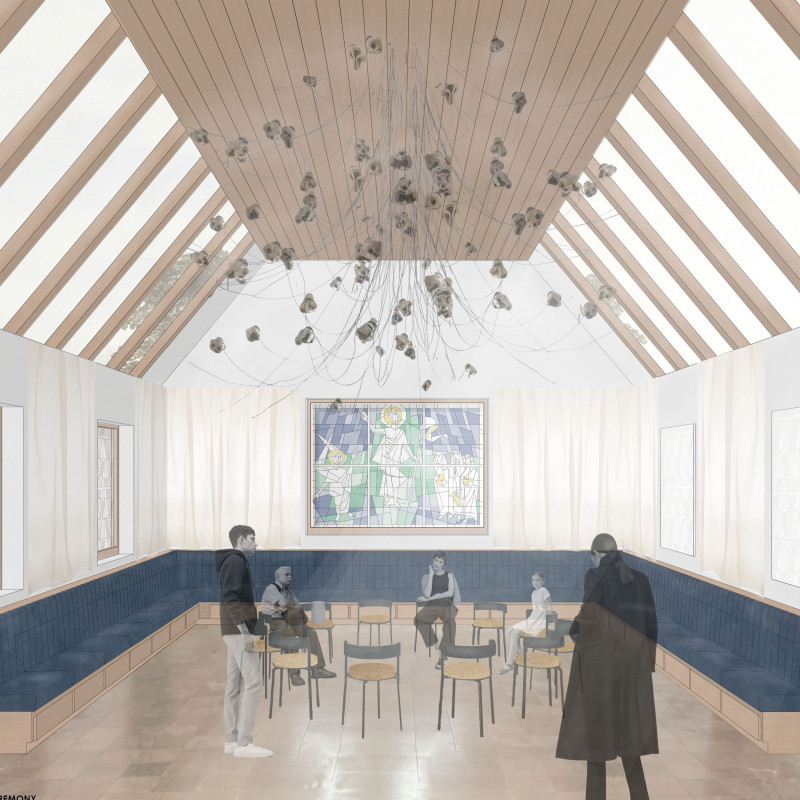5 key facts about this project
Functionally, the project serves as a multi-purpose facility, accommodating various community activities and engagement. The design prioritizes accessibility and flexibility, allowing for diverse uses ranging from social gatherings, educational programs, to recreational activities. The layout is meticulously crafted to promote interaction among users while ensuring that different zones maintain a coherent flow and integration.
A key feature of the project is its spatial configuration, which is designed to encourage movement and exploration. The open floor plan allows for seamless transitions between different areas, creating a vibrant atmosphere suited for community events. Large windows punctuate the façade, ensuring ample natural light floods the interior spaces, which fosters a sense of warmth and connectivity to the outside environment. The emphasis on transparency not only reinforces the link between indoor and outdoor realms but also symbolizes openness and inclusivity, core tenets of the project’s mission.
Materiality plays a crucial role in this architectural endeavor. The choice of durable materials reflects a commitment to sustainability and longevity. Concrete serves as the primary structural foundation, providing strength and stability while allowing for a modern aesthetic. Glass is strategically used to enhance visibility and integration with the landscape, while also facilitating natural ventilation and energy efficiency. Wood accents throughout the interior add a tactile warmth, drawing on natural elements to create a welcoming atmosphere. The careful selection of materials not only aligns with contemporary design trends but also fosters a sense of harmony with the environment.
The project’s design incorporates unique approaches that address both aesthetic considerations and functional requirements. For example, the incorporation of green roofs and wall gardens introduces biophilic design principles, promoting ecological awareness and reducing the urban heat island effect. These elements not only beautify the structure but also contribute to biodiversity and improved air quality, aligning with sustainable architectural practices. The design also features innovative shading devices that enhance energy efficiency, demonstrating a proactive approach toward reducing the building's carbon footprint.
Moreover, the integration of technology within the architectural framework is noteworthy. Smart building systems are employed to monitor energy usage and enhance user comfort, illustrating how modern technologies can coexist with architectural beauty. This integration ensures that the building is not only architecturally pleasing but also highly functional and responsive to the needs of its occupants.
In summary, this architectural project stands as a model of contemporary design that is both functional and aesthetically compelling. Its thoughtful approach to materiality, spatial organization, and sustainability showcases the best practices in modern architecture. The project embodies a vision that prioritizes community engagement and environmental responsibility, making it a vital addition to the local context. For those interested in exploring this project further, reviewing architectural plans, sections, and design details will provide deeper insights into its sophisticated architectural ideas and innovative designs.























